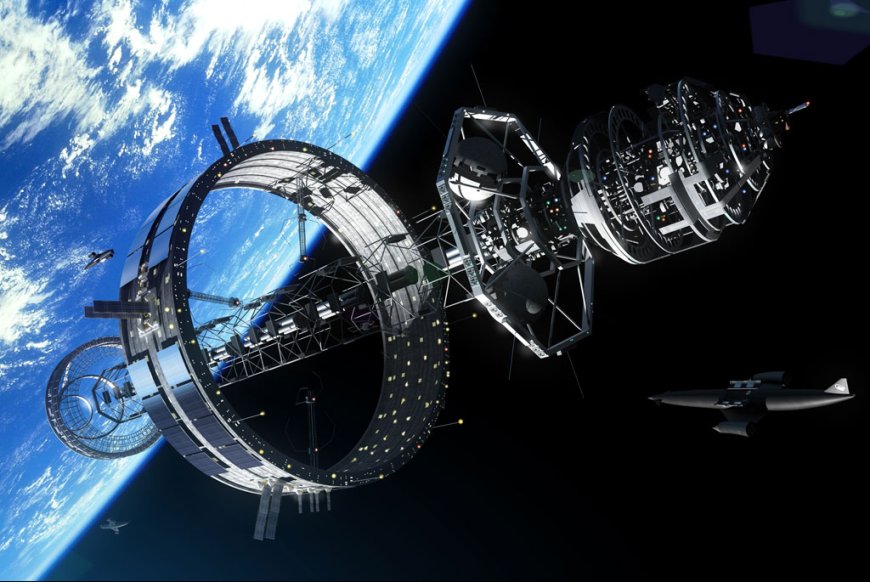Beyond the Stars: Will Humans Ever Leave the Solar System?
Can humans travel beyond the solar system? Explore the science, challenges, and future of interstellar travel.

Introduction: The Dream of Interstellar Travel
For centuries, humans have gazed at the stars and imagined journeying beyond our solar system. From science fiction legends like Star Trek to groundbreaking scientific proposals, the idea of interstellar travel has captivated minds across generations.
But how close are we to actually achieving it? Could we ever send humans beyond the Kuiper Belt, past the Oort Cloud, and into the vast unknown?
With advancements in propulsion technology, artificial intelligence, and long-term space survival, experts believe that interstellar travel may no longer be a fantasy—but how soon could it happen? Let’s explore the possibilities, challenges, and the latest research that could take humans beyond the solar system.
The Distance Problem: Why Is Interstellar Travel So Hard?
Space is incomprehensibly vast. Our nearest star system, Proxima Centauri, is 4.24 light-years away—or about 25 trillion miles. With current spacecraft speeds, it would take thousands of years to reach.
To put this into perspective:
- The Voyager 1 spacecraft, launched in 1977, is the farthest human-made object from Earth, traveling at 38,000 mph. Even at that speed, it would take over 73,000 years to reach Proxima Centauri. (Source: NASA)
- The fastest spacecraft ever built, Parker Solar Probe, can reach speeds of 430,000 mph—but even at this pace, a trip to the nearest star would take over 6,500 years. (Source: Johns Hopkins APL)
Clearly, using conventional rocket technology won’t get us there. We need radical breakthroughs in propulsion and life support systems if humans are ever to leave the solar system within a single lifetime.
Theoretical Propulsion Systems for Interstellar Travel
1. Nuclear Fusion and Fission Rockets
Nuclear-powered rockets, either using fission (splitting atoms) or fusion (combining atoms like the Sun does), could dramatically increase our speed.
- NASA's Project Orion (1950s) proposed nuclear explosion propulsion, but the risks were too high.
- Project Daedalus (1970s) aimed to use nuclear fusion, potentially reaching 12% the speed of light—but the tech is still decades away. (Source: British Interplanetary Society)
If perfected, nuclear propulsion could cut interstellar travel time to a few decades instead of millennia.
2. Antimatter Propulsion: The Ultimate Energy Source
Antimatter is the most efficient fuel in the universe, capable of converting 100% of its mass into energy (compared to just 0.0001% efficiency in chemical rockets).
? A one-gram antimatter rocket could provide as much energy as 40,000 tons of TNT! (Source: CERN)
But there’s a catch:
- Antimatter is extremely difficult and expensive to produce (1 gram costs trillions to create in labs).
- Containing antimatter safely without accidental annihilation is an unsolved challenge.
3. Light Sails & Laser Propulsion: Riding the Speed of Light
A promising alternative is light sail propulsion, where a spacecraft is pushed by powerful laser beams from Earth or the Sun’s radiation pressure.
One example is the Breakthrough Starshot project, backed by billionaire Yuri Milner and Stephen Hawking before his passing. Their goal?
- Launch a fleet of tiny interstellar probes equipped with light sails.
- Use ground-based lasers to propel them to 20% the speed of light.
- Reach Proxima Centauri in just 20 years. (Source: Breakthrough Initiatives)
While this method doesn’t yet work for human travel, it could be the first step toward interstellar exploration.
Could Humans Survive an Interstellar Journey?
Even if we crack the propulsion challenge, there’s another massive issue: human survival on ultra-long space missions.
1. Generational Starships: A Civilization in Space
One idea is to launch a self-sustaining "generation ship", where multiple generations of humans are born, live, and die before reaching a distant star.
Challenges include:
- Biosphere Management – Keeping a spaceship habitable for hundreds or thousands of years.
- Psychological Effects – Humans must adapt to living permanently in space, possibly never seeing Earth again.
- Genetic Diversity – Small crew populations could face inbreeding risks over time. (Source: MIT Technology Review)
2. Cryogenic Sleep: Hibernation for Space Travel
Inspired by sci-fi movies like Interstellar, hibernation technology could allow astronauts to "sleep" for decades to reduce resource consumption and psychological stress.
NASA is actively researching cryosleep pods for future missions to Mars, but long-term hibernation for centuries remains theoretical. (Source: NASA’s Innovative Advanced Concepts (NIAC))
3. Transhumanism & Digital Immortality
Some scientists propose that instead of sending humans, we send digitized human minds on robotic probes.
- Brain-uploading technology could allow AI-powered human consciousness to travel without physical bodies.
- This would eliminate the need for food, air, or biological survival, making long-distance travel easier.
Although purely theoretical, Elon Musk’s Neuralink and AI research could lay the groundwork for this mind-machine integration. (Source: Neuralink)
When Will We Leave the Solar System?
Near-Term (Next 50 Years)
✅ Probes: Breakthrough Starshot could launch interstellar probes within decades.
✅ Advanced Nuclear Propulsion: NASA and private companies will continue testing fusion rockets.
Medium-Term (Next 100-200 Years)
✅ Manned Mars Missions: Laying the groundwork for deep-space colonization.
✅ Cryogenic Sleep Experiments: Testing long-duration human hibernation.
✅ Antimatter Propulsion Feasibility: Major advances in antimatter production.
Long-Term (200+ Years)
✅ First Human Interstellar Mission: A fusion-powered ship or light sail craft might carry humans beyond the Oort Cloud.
✅ AI & Digital Mind Uploading: The possibility of non-biological human exploration.
(Source: Harvard-Smithsonian Center for Astrophysics)
Final Thoughts: Will We Become an Interstellar Species?
Interstellar travel is still one of humanity’s greatest challenges—but it’s not impossible.
While current technology won’t get us there anytime soon, the rapid pace of AI, quantum physics, and space exploration could make it a reality sooner than we expect.
Will humans ever leave the solar system? If history has taught us anything, it’s that humanity doesn’t give up on impossible dreams.
The stars are waiting. The only question is: when will we go?
What's Your Reaction?
 Like
0
Like
0
 Dislike
0
Dislike
0
 Love
0
Love
0
 Funny
0
Funny
0
 Angry
0
Angry
0
 Sad
0
Sad
0
 Wow
0
Wow
0



















































